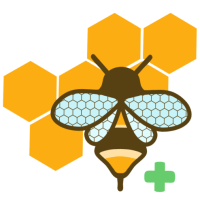Art therapy is a powerful, non-verbal approach that uses the creative process of making art to improve physical, mental, and emotional well-being. For brain health, it serves as more than just a creative outlet; it is a therapeutic tool that directly supports and enhances cognitive function.
How Art Therapy Works on the Brain
Art therapy stimulates multiple areas of the brain, promoting neuroplasticity—the brain’s ability to reorganize itself by forming new neural connections. Here are the key ways it supports cognitive function:
Engages Multiple Brain Regions:
Making art requires the use of both the left and right hemispheres of the brain. The left hemisphere is engaged in analytical tasks like planning a composition or organizing materials, while the right hemisphere is activated for visual-spatial processing and creative expression.
-
This bilateral engagement strengthens communication between the two hemispheres.
Enhances Memory: Art therapy can help improve both short-term and long-term memory. The act of creating art about past experiences or memories can help individuals recall and solidify those memories. The process of using colors, shapes, and textures can also create new, tangible memories that a person can later revisit.
Improves Attention and Focus: The focused concentration required to complete an art project—from choosing colors to making precise movements—strengthens a person’s ability to pay attention for sustained periods.
This is particularly beneficial for individuals with conditions like dementia or traumatic brain injuries (TBI) who struggle with concentration.
Boosts Executive Function: Executive functions are high-level cognitive skills that include planning, problem-solving, and decision-making. Art therapy exercises these skills by requiring a person to make choices about their work, overcome creative challenges, and structure their process.
Promotes Emotional Regulation:
-
Art provides a non-verbal channel for expressing feelings that may be difficult to put into words.
This can reduce stress and anxiety, which are known to negatively impact cognitive function.
-
The emotional release can clear mental clutter and allow for better focus.
Art Therapy for Specific Conditions
Art therapy is especially effective in managing the cognitive symptoms associated with various conditions:
Dementia and Alzheimer’s: For people living with dementia, art therapy has been shown to improve attention and memory, enhance visual-spatial abilities, and foster communication skills.
The sensory input from materials and the creative process itself can help to delay the rate of cognitive decline and improve overall quality of life.
Traumatic Brain Injury (TBI) and Stroke: Art therapy is a key part of rehabilitation for TBI and stroke survivors. It helps to rebuild damaged neural pathways, improve fine motor skills and hand-eye coordination, and boost problem-solving abilities.
It also provides a vital outlet for individuals to process the emotional and psychological impact of their injury.
Mental Health Disorders: For conditions like schizophrenia, art therapy can significantly improve attention and executive function by activating the brain’s cognitive networks and enhancing information processing.
Practical Techniques
Art therapy techniques are varied and can be tailored to an individual’s needs. They often involve tactile and sensory experiences to provide maximum cognitive stimulation:
Collage and Scrapbooking: These activities involve sorting and organizing images, which can improve cognitive sorting, memory, and narrative skills.
Painting and Drawing: The act of choosing colors, mixing them, and applying them to a canvas requires fine motor skills, focus, and visual-spatial processing.
Sculpting with Clay or Dough: This highly tactile activity strengthens fine motor skills and hand muscles, while the process of forming a 3D object engages spatial reasoning.
In essence, art therapy provides a tangible, hands-on way for people to exercise and strengthen their brains.
The therapeutic value is not in the final artwork, but in the process of creation, which actively engages and benefits the mind.



How Art Therapy Supports Cognitive Function – Boosting Brain Health